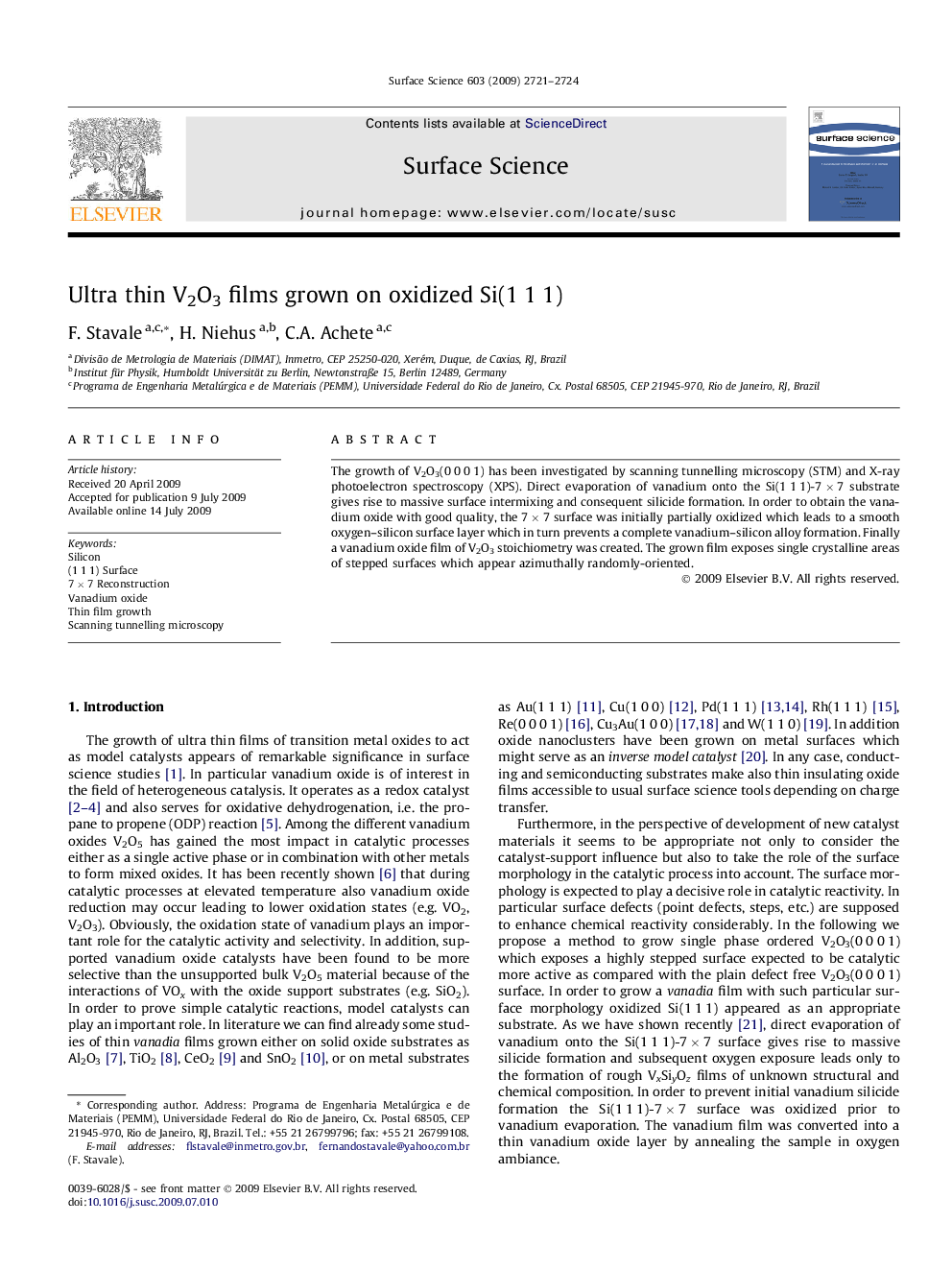| Article ID | Journal | Published Year | Pages | File Type |
|---|---|---|---|---|
| 5424053 | Surface Science | 2009 | 4 Pages |
Abstract
The growth of V2O3(0Â 0Â 0Â 1) has been investigated by scanning tunnelling microscopy (STM) and X-ray photoelectron spectroscopy (XPS). Direct evaporation of vanadium onto the Si(1Â 1Â 1)-7Â ÃÂ 7 substrate gives rise to massive surface intermixing and consequent silicide formation. In order to obtain the vanadium oxide with good quality, the 7Â ÃÂ 7 surface was initially partially oxidized which leads to a smooth oxygen-silicon surface layer which in turn prevents a complete vanadium-silicon alloy formation. Finally a vanadium oxide film of V2O3 stoichiometry was created. The grown film exposes single crystalline areas of stepped surfaces which appear azimuthally randomly-oriented.
Related Topics
Physical Sciences and Engineering
Chemistry
Physical and Theoretical Chemistry
Authors
F. Stavale, H. Niehus, C.A. Achete,
